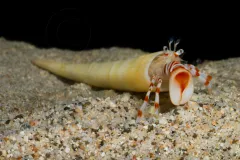Uncovering Biodiversity Before It Disappears

Editor's Note: See more information and details about the organisms displayed in the slideshow here.
Researchers who come to Curaçao to take part in DROP (Deep Reef Observation Project) aren’t running on sleep; they’re running on passion, curiosity and a drive to not waste a moment of opportunity to explore. (And, yes, a fair bit of caffeine.)
We are in as much an age of discovery as were Lewis and Clark, Alfred Russel Wallace or Austin Hobart Clark (whose travels on-board the Albatross in 1906 contributed to building NMNH's collections). But our current age of exploration is technology-driven. We are improving our ability to observe and sample in formerly unreachable territories, such as the mid- and deep ocean. And with the ability to observe smaller and smaller dimensions, “new” worlds are opening up and being observed by ocean scientists and explorers, such as those from the 10-year Census of Marine Life.
The sobering reality, however, is that the growing rate of extinction means that much of life’s current diversity could be lost before we even know it exists. We need even more explorers!
In a desire to learn about deep-reef diversity and function, Smithsonian researchers and their colleagues are combining traditional and cutting-edge practices. DROP is unique in that it uses a submersible, ARMS (Autonomous Reef Monitoring Structures), taxon-specific collecting structures, and genetic barcoding techniques, to explore and document reefs below the reach of SCUBA to a depth of 1000 feet (300 meters). Scientists from Smithsonian facilities in Washington D.C., Florida, and Panama, along with colleagues from the National Marine Fisheries Service and the Coral Reef Research Foundation, are combining expertise for this multi-year project. They are in year two of the DROP project and have not been disappointed. Along a stretch of coastline no more than a quarter of a mile from the home port of the submersible Curasub, they are discovering suspected new species with almost every day of field work, including fishes, snails, bivalves, crabs and worms!
The trail from suspected to confirmed new species has many steps. Verification means genetic sampling and careful morphological comparisons with known species held in museum collections. DROP moves from the field, to the lab, to collections and back again. This journey of exploration is exciting and varied. It takes curiosity, flexibility, stamina, a range of investigational skills and a passport. And, oh yes, that cup of coffee doesn’t hurt.

